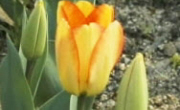Flowers have historically been used in various cultural fields due to their beauty. Also, they enrich our lives by giving us comfort in our everyday lives. But people's preference for flowers are very subjective, so an objective analysis of verificati...
http://chineseinput.net/에서 pinyin(병음)방식으로 중국어를 변환할 수 있습니다.
변환된 중국어를 복사하여 사용하시면 됩니다.
- 中文 을 입력하시려면 zhongwen을 입력하시고 space를누르시면됩니다.
- 北京 을 입력하시려면 beijing을 입력하시고 space를 누르시면 됩니다.

대상별 꽃의 선호 및 소비 유형에 관한 연구 = A Study on the Preference and Consumption Types of Flowers by Target
한글로보기https://www.riss.kr/link?id=A107976135
- 저자
- 발행기관
- 학술지명
- 권호사항
-
발행연도
2021
-
작성언어
Korean
-
주제어
꽃 ; 조형적 꽃부리 ; 정량화 ; 화예디자인 ; flowers ; formative corolla ; quantification ; floral art & design
-
등재정보
KCI등재
-
자료형태
학술저널
- 발행기관 URL
-
수록면
399-414(16쪽)
-
KCI 피인용횟수
0
- DOI식별코드
- 제공처
-
0
상세조회 -
0
다운로드
부가정보
다국어 초록 (Multilingual Abstract)
Flowers have historically been used in various cultural fields due to their beauty. Also, they enrich our lives by giving us comfort in our everyday lives. But people's preference for flowers are very subjective, so an objective analysis of verification of the connection between actual demand and purchase of the flowers is needed. This study aims to predict the characteristics of flower consumption by the preferences of the groups according to the analysis of the ideological perception of flower beauty by quantitative method. The scope of the study is to survey the people's preference of flowers and purchase patterns based on flower gifts. As a research method, general perceptions and purchase patterns of the flower's aesthetic elements are investigated through surveys by the general public and expert groups. With this, the cognitive characteristics of common flowers are revealed and the possibility to quantify each cluster is predicted by substituting it into a formative corolla analysis module which is deducted from the previous study by the researcher. First, the results show the possibility that the conceptual beauty of flowers can be measured by the formative element of their shape and colour. Second, as a result of the integrated analysis module of the formative corolla, the rose shape and sunflower shape appeared the most, as clearly confirmed that in general the distinction of the front of flowers is a circle(FC), the side of flowers is a wine cup(SW), and the rachis aspect is a single flower(RO). In terms of colour, it was confirmed that the colour contrast factor was distinctive. Third, it is confirmed that roses are highly popular not only as a cultural and symbolic meaning but also as a commodity and marketability. Fourth, as products, flowers are only made as bouquets and flower baskets. Therefore, diversification seems to be needed. I expect that the results of this study will expand our perception of flowers and will be used as a practical basic quantified data for researching the flower market, and furthermore, diversify the species of flowers in the market.
국문 초록 (Abstract)
꽃은 그 아름다움의 속성 때문에 역사적으로 다양한 문화영역에서 활용되었으며, 일상에서 접하는 꽃은 우리에게 위안과 안식을 주고 삶을 풍요롭게 해준다. 그러나 꽃에 대한 선호는 매우 ...
꽃은 그 아름다움의 속성 때문에 역사적으로 다양한 문화영역에서 활용되었으며, 일상에서 접하는 꽃은 우리에게 위안과 안식을 주고 삶을 풍요롭게 해준다. 그러나 꽃에 대한 선호는 매우 주관적이어서소비자의 선호도에 따라 실제 꽃의 수요를 예측하는 데는 객관적으로 검증할 수 있는 방법이 필요하다. 본 연구는 객관적 분석 가능한 적량적 방법을 통해 꽃의 아름다움에 대한 미적 인지 및 유형에 따른 꽃소비의 군집별 특성 예측을 목적으로 한다. 연구범위로는 선물용 꽃을 중심으로 일반인과 전문가의 꽃에 대한 인식을 조사한다. 연구방법으로는 설문을 통해 꽃의 미적 요소에 대한 일반적인 인식 및구매 패턴을 조사하고, 이를 토대로 연구자의 선행연구에서 도출된 조형적 꽃부리 분석모듈에 대입하여 꽃을 분석한다. 연구결과는 다음과 같다. 첫째, 꽃에 대한 관념적 아름다움에 대해 형태와 색채와같은 조형요소의 시각화를 통해 정량화 가능성을 확인하였다. 둘째, 조형적 꽃부리 통합분석모듈에 의한 분석 결과, 장미 모양과 해바라기 모양의 꽃부리가 가장 많이 나타났으며, 일반적으로 꽃을 인지하는 정면에서의 형태는 원형이며, 측면에서는 와인잔 형태가, 꽃대에 있어서는 단일꽃의 특징이 매우뚜렷함을 확인하였다. 색채에 있어서는 색상대비의 특징이 높은 것을 확인하였다. 셋째, 장미는 문화적, 상징적인 의미뿐만 아니라 상품성과 시장성에 있어서 탁월함을 확인하였다. 넷째, 꽃 상품에 있어서는 꽃다발, 꽃바구니 형태에 집중되어 상품의 다변화가 필요해 보인다. 차후 본 연구의 결과가 꽃에대한 인식을 확장하고, 실제 꽃소비의 시장조사에 있어 정량화된 기초자료로서 활용되기를 기대하며나아가 소비와 유통과정에서 꽃 상품의 다양화를 기대한다.
참고문헌 (Reference)
1 이미향, "조형원리를 기반으로 한 꽃의 조형요소에 관한 연구 -꽃의 구조에 따른 조형 분류를 중심으로-" 한국기초조형학회 22 (22): 259-278, 2021
2 Park, H. D., "Plant System Taxonomy (식물계통분류학)" WorldScience 2006
3 O, A. L., "Flower Consumption According to Purchase Motivation and Lifestyles -Focussed on Bundang Area-" Chungbuk National University 2009
4 DK & Royal Botanic Gardens Kew, "Flora: Inside the Secret World of Plants (식물 대백과사전)" Sciencebooks 2020
1 이미향, "조형원리를 기반으로 한 꽃의 조형요소에 관한 연구 -꽃의 구조에 따른 조형 분류를 중심으로-" 한국기초조형학회 22 (22): 259-278, 2021
2 Park, H. D., "Plant System Taxonomy (식물계통분류학)" WorldScience 2006
3 O, A. L., "Flower Consumption According to Purchase Motivation and Lifestyles -Focussed on Bundang Area-" Chungbuk National University 2009
4 DK & Royal Botanic Gardens Kew, "Flora: Inside the Secret World of Plants (식물 대백과사전)" Sciencebooks 2020
동일학술지(권/호) 다른 논문
-
앱 아이콘의 시각적 수사기법 응용 분석 - 중국 쇼트 비디오/라이브 앱을 중심으로 -
- 한국기초조형학회
- 호위위
- 2021
- KCI등재
-
백색소음이 몽타주에 미치는 영향 - 작품 <나의 주인공으로부터>를 중심으로 -
- 한국기초조형학회
- 정우용
- 2021
- KCI등재
-
스캠퍼 기법을 활용한 창의적 패션산업디자인 교육모델 연구
- 한국기초조형학회
- 강혜승
- 2021
- KCI등재
-
사실주의 그림책에 재현된 폭력의 그림텍스트 의미작용 -분노단계에 따른 그림책 사례를 중심으로-
- 한국기초조형학회
- 이은주
- 2021
- KCI등재
분석정보
인용정보 인용지수 설명보기
학술지 이력
| 연월일 | 이력구분 | 이력상세 | 등재구분 |
|---|---|---|---|
| 2027 | 평가예정 | 재인증평가 신청대상 (재인증) | |
| 2021-01-01 | 평가 | 등재학술지 유지 (재인증) |  |
| 2018-01-01 | 평가 | 등재학술지 유지 (등재유지) |  |
| 2015-02-09 | 학술지명변경 | 외국어명 : Bulletin of Korean Society of Basic Design & Art -> Journal of Basic Design & Art |  |
| 2015-01-01 | 평가 | 등재학술지 유지 (등재유지) |  |
| 2011-01-01 | 평가 | 등재학술지 유지 (등재유지) |  |
| 2009-01-01 | 평가 | 등재학술지 유지 (등재유지) |  |
| 2006-01-01 | 평가 | 등재학술지 선정 (등재후보2차) |  |
| 2005-01-01 | 평가 | 등재후보 1차 PASS (등재후보1차) |  |
| 2003-01-01 | 평가 | 등재후보학술지 선정 (신규평가) |  |
학술지 인용정보
| 기준연도 | WOS-KCI 통합IF(2년) | KCIF(2년) | KCIF(3년) |
|---|---|---|---|
| 2016 | 0.33 | 0.33 | 0.34 |
| KCIF(4년) | KCIF(5년) | 중심성지수(3년) | 즉시성지수 |
| 0.34 | 0.34 | 0.512 | 0.08 |





 KCI
KCI DBpia
DBpia






